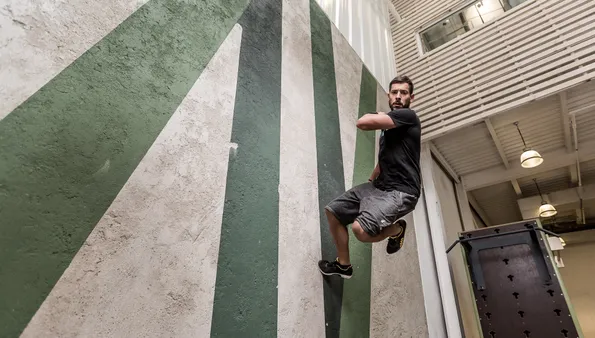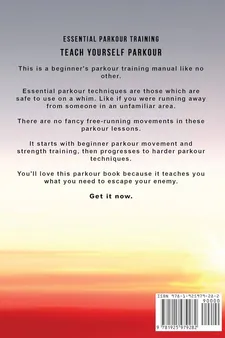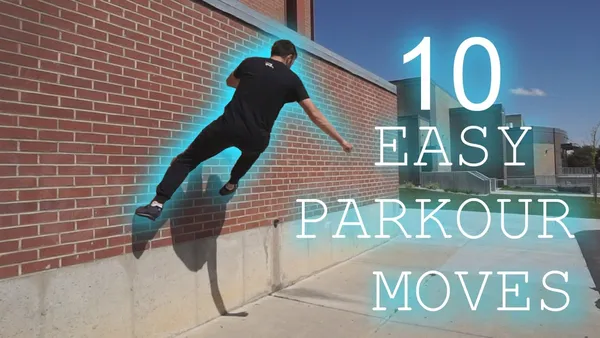Table of Contents
Welcome to Kizworld, your ultimate destination for mastering the art of parkour. As you embark on this thrilling journey, discover How to learn the basic parkour skills and movements that will transform you into a true traceur. Unlock your potential, push your limits, and experience the exhilarating freedom of movement as you navigate urban environments with finesse and agility. Get ready to conquer obstacles, defy gravity, and unleash your inner athlete. Your parkour adventure begins here!
How to Learn the Basic Parkour Skills and Movements: A Comprehensive Guide
I. Jump and Landing Techniques
Mastering the Art of Jumping and Landing in Parkour
In the realm of parkour, jumping and landing techniques play a pivotal role in navigating obstacles and maintaining fluidity in movement. These techniques require a combination of strength, agility, and control to execute safely and effectively.
- Importance of Jumping and Landing:
- Jumping and landing are fundamental skills in parkour for clearing obstacles and transitioning between surfaces.
- Proper jumping and landing techniques minimize impact forces, reducing the risk of injuries.
- Efficient jumping techniques conserve energy, allowing traceurs to maintain momentum and flow.
Essential Jumping Techniques
1. The Parkour Vault:
The parkour vault is a dynamic technique used to overcome obstacles. It involves jumping over an obstacle with a powerful and controlled motion.
Learn the Parkour Vault Technique
2. The Parkour Roll:
The parkour roll is a technique used to safely descend from heights or absorb the impact of a fall. It involves rolling the body in a controlled manner to dissipate energy and minimize injury.
Master the Parkour Roll Technique
3. The Parkour Wall Run:
The parkour wall run is a technique used to scale walls or ledges. It involves running up a wall for a short distance, using momentum and footwork to propel the body upwards.
Elevate Your Parkour Skills with the Wall Run
Essential Landing Techniques
1. The Parkour Precision Jump:
The parkour precision jump is a technique used to land accurately on a specific target. It requires control and coordination to ensure a safe and precise landing.
Master the Parkour Precision Jump
2. The Parkour Cat Leap:
The parkour cat leap is a technique used to land on all fours, absorbing impact and maintaining balance. It is commonly used when landing from heights or clearing obstacles.
Safely Land with the Parkour Cat Leap
3. The Parkour Flip:
The parkour flip is a technique used to add style and momentum to a jump. It involves performing a somersault or other aerial maneuver during a jump.
Learn Parkour Flips and Tricks
Safety and Practice
When practicing jumping and landing techniques, it is crucial to prioritize safety. Start with basic techniques and gradually progress to more advanced moves. Always ensure proper warm-up and cool-down to prevent injuries.
Safety Tips | Practice Tips |
|---|---|
Choose appropriate surfaces for practice. | Start with low obstacles and gradually increase the height. |
Wear proper protective gear, such as knee pads and wrist guards. | Focus on controlled landings to minimize impact. |
Maintain proper body alignment and posture during jumps and landings. | Practice regularly to improve technique and build confidence. |
By mastering jumping and landing techniques, parkour practitioners enhance their mobility, overcome obstacles with agility, and navigate urban environments with grace and precision. Remember to prioritize safety, practice regularly, and continually refine your skills to become a proficient traceur.
II. Learn to Grab and Swing
Learn to Grab and Swing
In the realm of parkour, the ability to grab and swing is a fundamental skill that opens up a world of possibilities. Whether you're navigating urban landscapes or tackling challenging obstacles, mastering this technique will elevate your parkour game.
To execute a proper grab and swing, start by identifying a suitable object to grab onto. This could be a bar, a railing, a tree branch, or any other sturdy structure that can support your weight. Once you've found your target, position yourself in front of it with your feet shoulder-width apart and your knees slightly bent.
Next, reach out with your dominant hand and grasp the object firmly. As you do this, simultaneously jump up and swing your body forward. Keep your core engaged and your body straight as you swing through the air. Aim to land softly on your feet, maintaining control and balance.
The key to a successful grab and swing is to generate momentum and control your body throughout the movement. Practice this technique in a safe environment, starting with low obstacles and gradually increasing the height and difficulty as you gain confidence.
Here are some additional tips for mastering the grab and swing:
- Choose objects that are sturdy and can support your weight.
- Maintain a strong grip on the object throughout the swing.
- Keep your body straight and your core engaged.
- Aim to land softly on your feet, maintaining control and balance.
- Practice regularly to improve your technique and confidence.
With consistent practice and dedication, you'll be able to incorporate the grab and swing into your parkour routine, adding a new dimension of excitement and agility to your movements.
If you're looking to further enhance your parkour skills, check out our comprehensive guide on How to Learn the Basic Parkour Skills and Movements. This in-depth resource provides step-by-step instructions, helpful tips, and valuable insights to help you master the fundamentals of parkour.
Benefit | Description |
Increased Agility | Improves your ability to navigate obstacles and move fluidly through your environment. |
Enhanced Coordination | Requires precise timing and coordination between your hands and feet. |
Boosted Confidence | Overcoming challenging obstacles can boost your self-confidence and sense of accomplishment. |
Fun and Excitement | Adds a thrilling element to your parkour practice and makes it more enjoyable. |
Remember, safety is paramount in parkour. Always practice in a controlled environment and under the supervision of a qualified instructor. With the right approach and dedication, you can unlock your full potential as a traceur and experience the exhilarating freedom of parkour.
III. Train for Precision and Balance
Train for Precision and Balance
Precision and balance are essential for parkour. You need to be able to control your body and movements with great accuracy in order to safely navigate obstacles and perform tricks. You also need to be able to maintain your balance while moving quickly and changing direction.
There are a number of exercises you can do to train for precision and balance. Some of these exercises include:
- Single-leg balance: Stand on one leg and hold the position for as long as you can. Repeat on the other leg.
- Heel-toe walk: Walk forward, placing your heel on the toe of your front foot. Continue for as long as you can.
- Side-to-side balance: Stand with your feet shoulder-width apart and shift your weight from side to side. Keep your core engaged and your back straight.
- Forward and back balance: Stand with your feet shoulder-width apart and shift your weight forward and back. Keep your core engaged and your back straight.
- Balance board: Use a balance board to practice your balance while standing, kneeling, or sitting. You can also try doing exercises on the balance board, such as squats, lunges, and push-ups.
In addition to these exercises, you can also improve your precision and balance by practicing parkour moves. Start with basic moves, such as vaults, rolls, and wall runs, and gradually progress to more difficult moves as you become more comfortable.
As you train, focus on controlling your movements and maintaining your balance. Be patient and persistent, and you will eventually see results.
IV. Developing the Mental and Physical Strength
In the realm of parkour, both mental and physical strength are crucial for surmounting obstacles and navigating demanding environments with agility and confidence. Achieving this harmonious balance involves nurturing both aspects, as they work in tandem to unlock the parkour practitioner's true potential. Here are some strategies to cultivate both mental and physical strength in your parkour journey:
Enhance Your Mindset: Embrace the parkour mindset, which emphasizes perseverance, resilience, and a willingness to challenge your limits. Visualize yourself successfully overcoming obstacles, and maintain a positive attitude even when faced with setbacks. Practice mindfulness and meditation to cultivate focus and presence. By nurturing a strong mental foundation, you empower yourself to face the physical demands of parkour with greater resilience and determination.
Mental Strength | Strategies to Enhance |
|---|---|
Perseverance | Embrace challenges, learn from setbacks, and never give up. |
Resilience | Bounce back from failures, remain positive, and maintain focus. |
Confidence | Believe in your abilities, visualize success, and trust your instincts. |
Focus | Practice mindfulness, meditation, and visualization techniques. |
Positivity | Cultivate a positive outlook, appreciate progress, and celebrate achievements. |
Forge Physical Prowess: Engage in regular physical conditioning to build strength, flexibility, and endurance. Incorporate exercises that target the muscle groups essential for parkour, such as the legs, core, and arms. Focus on functional movements that mimic the demands of parkour, such as jumping, climbing, and balancing. Additionally, emphasize dynamic stretching to enhance flexibility and reduce the risk of injuries. By developing a strong and agile body, you lay the foundation for safe and proficient parkour practice.
Foster Mind-Body Connection: Engage in activities that promote the mind-body connection, such as yoga, tai chi, or meditation. These practices enhance body awareness, improve coordination, and cultivate a deeper understanding of the relationship between the mind and body. By honing this connection, parkour practitioners can perform movements with greater precision, fluidity, and flow. They can also better recognize and respond to the feedback their bodies provide, enabling them to adapt and overcome obstacles more effectively.
- Find a Qualified Parkour Instructor
- Develop Physical Strength: Combine parkour training with complementary martial arts disciplines.
- Enhance Flexibility: Incorporate yoga sessions into your routine to improve flexibility and balance.
V. Conclusion
As you delve deeper into the world of parkour, remember that patience, persistence, and safety are paramount. Start with the basics, master each skill gradually, and always prioritize your well-being. With dedication and a positive mindset, you'll find yourself moving through urban landscapes with newfound agility and confidence. Embrace the challenges, revel in the sense of accomplishment, and unlock the boundless potential that lies within you. Whether you're navigating city streets or exploring natural terrains, embrace the freedom and exhilaration that parkour offers.